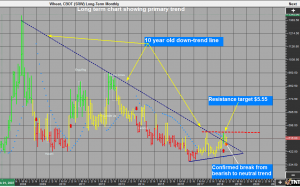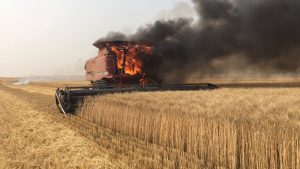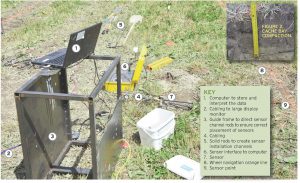Market side: Futures trading basics
LESSON 39: TECHNICAL ANALYSIS

THIS WILL BE our final article in our Market side series. I will continue to provide market analysis and trading insights through occasional feature articles within the Ontario Grain Farmer and updates through GrainTALK channels such as the e-newsletter, videos, and seminars.
I want to end off with four principles that are a good takeaway for anybody wanting to condense market analysis to their basics. Although these rules are not written in stone, I feel they adequately summarize the principles which most technicians agree on.
These principles are compiled from the teachings of many well-known technicians and are not original on my part. However, some of these thoughts are my own and may not necessarily be in agreement with the other technicians.
FOUR BASIC PRINCIPLES OF TECHNICAL ANALYSIS – IDENTIFY THE TRUE TREND
One of the first and foremost rules in trading is to identify the true trend. This is difficult for a great many technicians. The first rule is that the true trend is one which has been intact for at least two years. This would be indicated on either a weekly or a monthly continuation chart. Trends only change every few years and although we may think a large move up or down causes the trend to change, this is only noise and fluctuations in the current trend. Once the true trend is identified, you will need to trade with the trend, as trading against it is somewhat foolhardy and will eventually prove to be expensive.
An example of a long term trend is the continuation wheat chart below which shows clearly a 10 year down trend. This primary trend chart is used only to identify the trend. We will use a daily or possibly an hourly chart to fine tune the entry point.

INDICATORS NEVER AGREE
People ask me which indicators are my favourite. This is a loaded question. Markets tend to exist in one of two phases: either trending or chopping back and forth in ranges. The problem is that trading tools that will work in one environment are exactly wrong in the other.
It’s like asking which is your favourite tool to build a house. There are many tools that appear useful, but there is no such thing as a multi-tool for trading. Different indicators work with different commodities and stocks. You will have to do your own research and find the ones that work best for you. Even then, it is important that you do not trade soley on a signal from any one indicator. Personally, I like to see confirmation from several indicators to assist me in making a trading decision. Notice I said “assist”.
TREND CONTINUATION IS MORE LIKELY THAN REVERSAL
Countertrend trading can be seductive. We all love to catch the exact high or low of a move, and while it certainly is possible to make money this way, it is the hard money. Traders who focus on countertrend trading often get an emotional charge from “being right” and from “catching the turn”, but this approach often causes us to miss the really easy money in trends. Given a market in a trend, your best bet is always to bet on continuation of the trend.
TRENDS END IN ONE OF TWO WAYS: BLOWOUT OR ROLLOVER
There are predictable patterns to the way most trends end. Either the market just runs out of steam, or panic buying or selling as the last buyers get onboard in FOMO (fear of missing out). In the latter case, the top or bottom ends in a buying/selling climax or blowout. The market goes parabolic as the last buyers are willing to pay practically any price to get in. Once that last buyer buys, a vacuum is created on the other side and the market eventually collapses with no buyers or sellers at an agreeable price. •
Marty Hibbs is a 25 year veteran futures trader, analyst, and portfolio manager. Hibbs was a regular guest analyst on BNN for four years. He is currently a grain merchandiser with Grain Farmers of Ontario.
DISCLAIMER: This information has been compiled from sources believed to be reliable, but no representation or warranty, express or implied, is made by the author, by Grain Farmers of Ontario, or by any other person as to its accuracy, completeness or correctness and Grain Farmers of Ontario accepts no liability whatsoever for any loss arising from any use of same.











